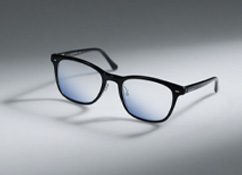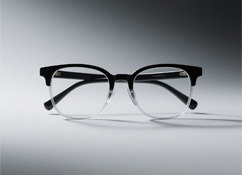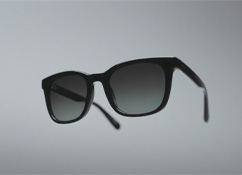Congenital myopia—also called hereditary nearsightedness—is a type of vision impairment that starts before a child reaches school age. Most cases are present at birth, while others develop between ages 2–3, worsening from mild to moderate to high nearsightedness over time. Importantly, this progression is irreversible. It’s often defined as nearsightedness of -5.00 diopters or more by age 6.

- Prevalence: It affects about 1% of the general population.
- Symptoms beyond blurriness: Even with corrective lenses, vision often doesn’t reach normal levels. Most children also have astigmatism (irregularly shaped corneas) and eyeball lengthening (axial elongation).
- Link to development, not habits: Unlike "regular" myopia, which can be worsened by too much screen time or close - up work, congenital myopia progresses due to how the eyeball grows—not how a child uses their eyes.
- Risk of lazy eye: If high nearsightedness goes uncorrected, blurry images on the retina can lead to amblyopia ("lazy eye"), where one eye stops working as well as the other.
Genetics play a big role in congenital myopia, especially when parents have severe nearsightedness:
If both parents have high myopia (over -6.00 diopters), their child’s risk of developing congenital myopia jumps significantly.
If parents have little to no nearsightedness, the risk drops sharply.
Not all inherited myopia is the same:
"Simple myopia" (common, mild nearsightedness) is a polygenic trait—usually mild, with no damage to the inner eye (fundus) and normal vision with correction.
Congenital myopia, however, is often autosomal recessive: It tends to be severe (-5.00 diopters or more), causes noticeable damage to the fundus (the inner back of the eye), and even with correction, vision is often poor.
While genetics are the main cause, researchers have several theories about what triggers congenital myopia:
- Genetic or embryonic abnormalities: It’s classified as "pathological myopia"—meaning it stems from abnormal eye development, not just everyday habits. (Other types of pathological myopia can start in childhood, teens, or adulthood, often linked to other eye or systemic diseases.)
- Other potential factors: Infections, poor nutrition, blood flow issues, immune system problems, or high pressure inside the eye (intraocular pressure) may contribute, though these are less well - understood.
- Pregnancy risks: Harmful factors during pregnancy, especially the first trimester (first 3 months), can disrupt fetal eye development. This includes:
- Rubella virus or other infections.
- Exposure to tobacco, alcohol, or unprescribed medications (which can cross the weak placenta early in pregnancy).
- Preeclampsia (high blood pressure during pregnancy with protein in the urine), which may affect blood flow to the fetus and harm eye development.
A baby’s eye development is most critical in the first 40 days of pregnancy (of a 280 - day full term). To protect fetal eye health:
- Avoid illness: Prevent infections like rubella or feverish colds, which can harm development.
- Eat well: Focus on high - protein, vitamin - rich foods to support immunity.
- Skip toxins: Avoid alcohol, smoking, and unprescribed drugs—these can cross the placenta and disrupt growth.
Once congenital myopia is diagnosed, early action is key:
- Get prescription glasses promptly: Children with congenital myopia have prematurely lengthening eyeballs, and their nearsightedness is largely tied to this growth. Corrective lenses help sharpen vision and prevent amblyopia.
- Wear glasses regularly: Consistent use ensures the retina gets clear images, lowering the risk of lazy eye.
- Regular eye exams: Schedule frequent check - ups (every 3–6 months) to monitor eyeball growth and adjust prescriptions as needed.
Q: Can congenital myopia be cured?
A: No, it’s irreversible. But early correction with glasses or other treatments can slow progression and prevent complications like amblyopia.
Q: How is congenital myopia diagnosed?
A: Eye doctors use dilated exams to check for nearsightedness in infants and toddlers. They’ll measure eyeball length and check for astigmatism or fundus damage.
Q: Is congenital myopia the same as childhood myopia?
A: No. Childhood myopia often starts later (school age) and is linked to habits like screen time, while congenital myopia begins earlier and is driven by genetics/development.
Congenital myopia is a genetic, progressive condition, but early intervention makes a big difference. For expectant parents, focusing on a healthy pregnancy can lower risks. For families with a child diagnosed with congenital myopia, prompt correction and regular eye care are key to protecting vision and preventing complications.











